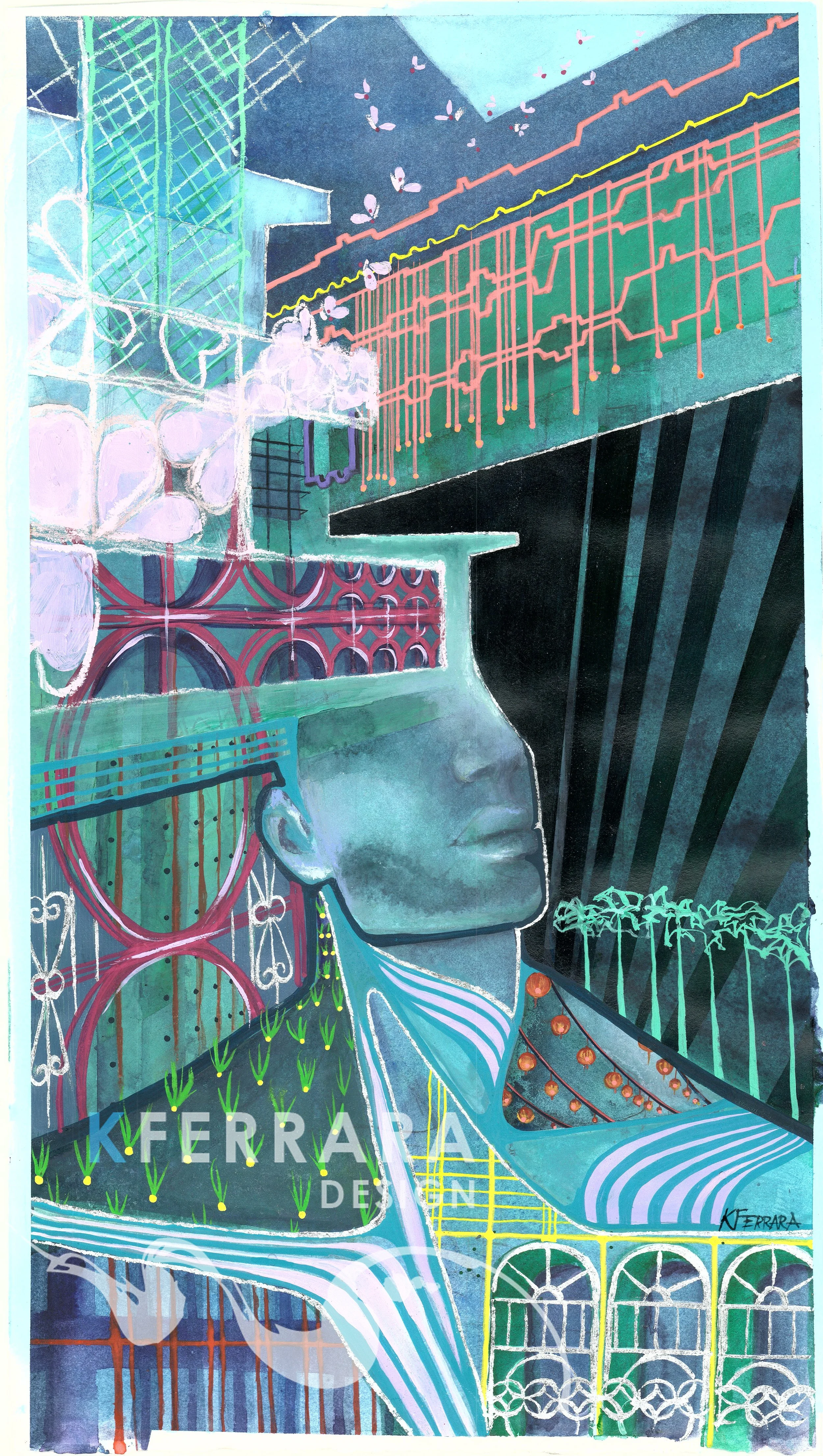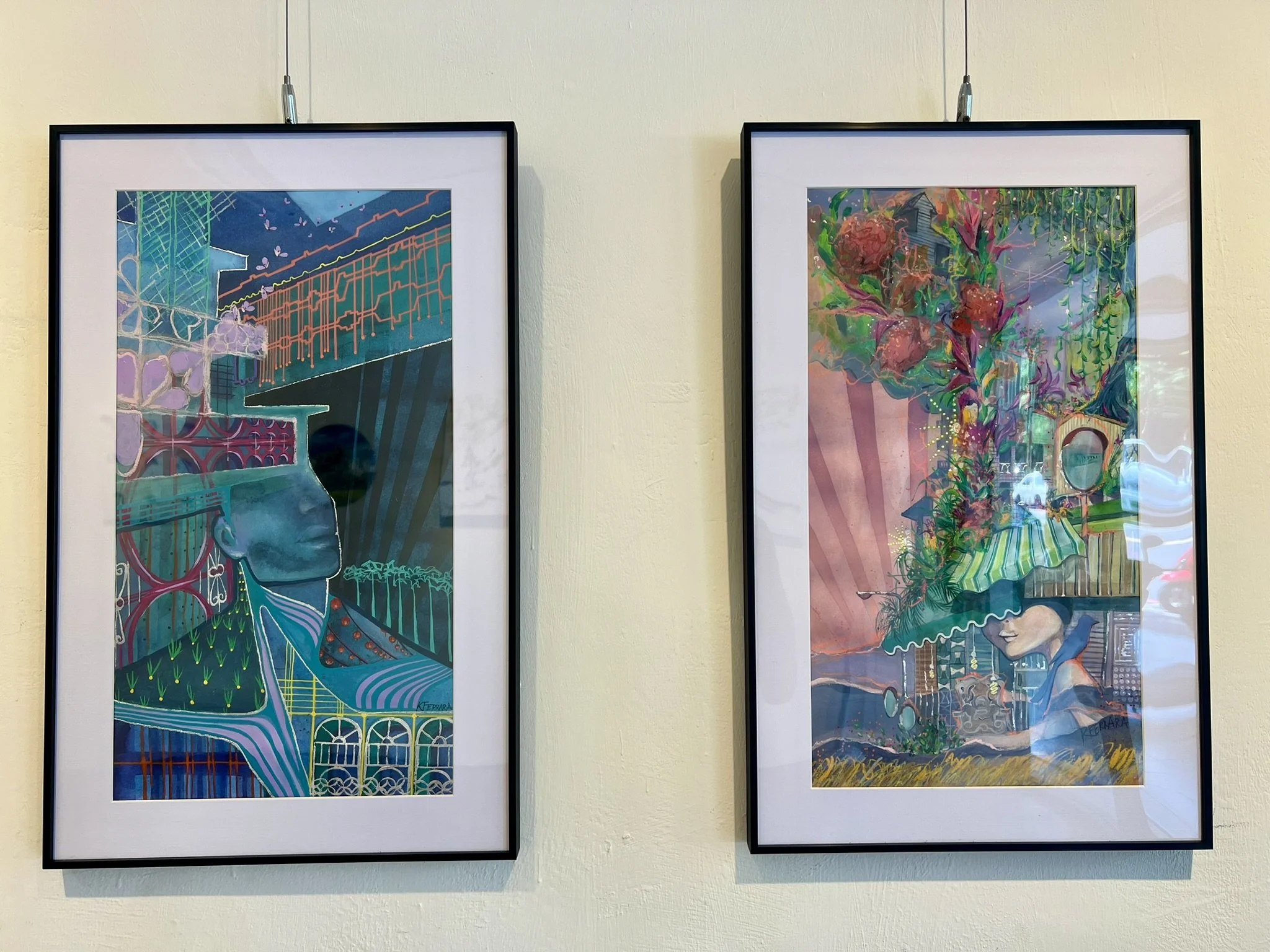 Image 1 of 3
Image 1 of 3

 Image 2 of 3
Image 2 of 3

 Image 3 of 3
Image 3 of 3




He Said 志明
"He Said" is part of a dyptych about the architectural elements and forms in Yilan, Taiwan.The Mandarin names are commonly used by early risers in Taiwan, representing both male and female names. These names reflect the sentiments of past Taiwanese culture, including love, local culture, and belong to the same era as the symbolic street elements depicted in the image.
This diptych captures two beloved landscapes of Yilan: 1) the architectural landscapes of traditional homes and 2) the natural landscape and elements inherent within them. Although they are compositional mirror images of each other, their subjects and interior details explore distinct facets of Yilan.
The Mandarin titles, commonly used for early risers in Taiwan, reflect both male and female names. These names evoke sentiments of past Taiwanese culture, encompassing themes of love, local tradition, and the era represented by the symbolic street elements depicted in the images.
The phrase "He Said / She Said" is often used in to illustrate differing perspectives on a subject. Here, it symbolizes the multifaceted nature of Yilan, shaped by the experiences of its inhabitants.
As an architect and designer, I am captivated by color, patterns, spatial dynamics, forms, and structural rhythms. I am intrigued by how pristine architectural gems evolve into more organic forms over time, influenced by either weathering or the inhabitants' modifications.
I find excitement in the juxtaposition of imperfections—such as varied tile patterns, chrome balconies that are repainted, spaces formed by overlapping awnings, and layers of signage competing for attention on bustling streets. These irregularities and“imperfections” signify the essence of "living."
"He Said" is part of a dyptych about the architectural elements and forms in Yilan, Taiwan.The Mandarin names are commonly used by early risers in Taiwan, representing both male and female names. These names reflect the sentiments of past Taiwanese culture, including love, local culture, and belong to the same era as the symbolic street elements depicted in the image.
This diptych captures two beloved landscapes of Yilan: 1) the architectural landscapes of traditional homes and 2) the natural landscape and elements inherent within them. Although they are compositional mirror images of each other, their subjects and interior details explore distinct facets of Yilan.
The Mandarin titles, commonly used for early risers in Taiwan, reflect both male and female names. These names evoke sentiments of past Taiwanese culture, encompassing themes of love, local tradition, and the era represented by the symbolic street elements depicted in the images.
The phrase "He Said / She Said" is often used in to illustrate differing perspectives on a subject. Here, it symbolizes the multifaceted nature of Yilan, shaped by the experiences of its inhabitants.
As an architect and designer, I am captivated by color, patterns, spatial dynamics, forms, and structural rhythms. I am intrigued by how pristine architectural gems evolve into more organic forms over time, influenced by either weathering or the inhabitants' modifications.
I find excitement in the juxtaposition of imperfections—such as varied tile patterns, chrome balconies that are repainted, spaces formed by overlapping awnings, and layers of signage competing for attention on bustling streets. These irregularities and“imperfections” signify the essence of "living."
"He Said" is part of a dyptych about the architectural elements and forms in Yilan, Taiwan.The Mandarin names are commonly used by early risers in Taiwan, representing both male and female names. These names reflect the sentiments of past Taiwanese culture, including love, local culture, and belong to the same era as the symbolic street elements depicted in the image.
This diptych captures two beloved landscapes of Yilan: 1) the architectural landscapes of traditional homes and 2) the natural landscape and elements inherent within them. Although they are compositional mirror images of each other, their subjects and interior details explore distinct facets of Yilan.
The Mandarin titles, commonly used for early risers in Taiwan, reflect both male and female names. These names evoke sentiments of past Taiwanese culture, encompassing themes of love, local tradition, and the era represented by the symbolic street elements depicted in the images.
The phrase "He Said / She Said" is often used in to illustrate differing perspectives on a subject. Here, it symbolizes the multifaceted nature of Yilan, shaped by the experiences of its inhabitants.
As an architect and designer, I am captivated by color, patterns, spatial dynamics, forms, and structural rhythms. I am intrigued by how pristine architectural gems evolve into more organic forms over time, influenced by either weathering or the inhabitants' modifications.
I find excitement in the juxtaposition of imperfections—such as varied tile patterns, chrome balconies that are repainted, spaces formed by overlapping awnings, and layers of signage competing for attention on bustling streets. These irregularities and“imperfections” signify the essence of "living."
